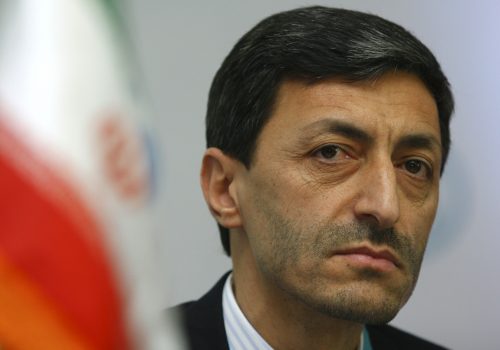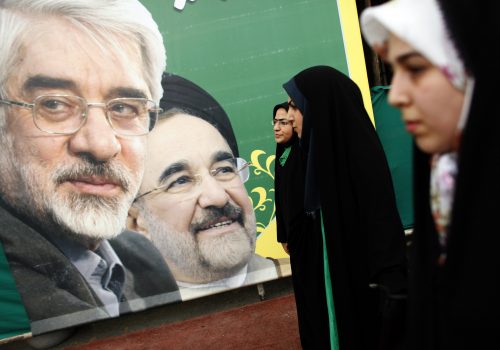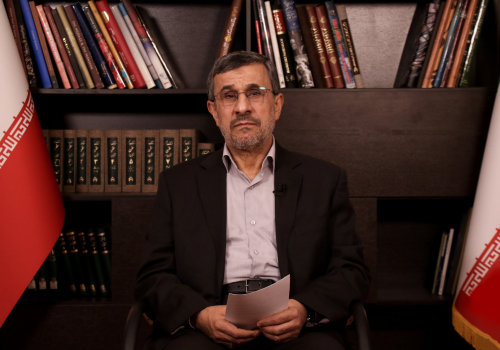Multiple elections could boost hardline victories in Iran
On Friday, 18 June 2021, many Iranians will be voting in four elections. Presidential elections and balloting for local councils will be held across the country while there will be by-elections for parliament and the Assembly of Experts, a group of clerics that theoretically chooses the next Supreme Leader. Tehran, uniquely, will hold all four.
The profusion of balloting is important because of its impact on boosting what otherwise might be a rather anemic turnout. Roughly 35 percent of the Iranian population lives in rural areas where village councils play a crucial role in people’s daily lives. Familial, ethnic, or tribal links guarantee a high turnout in these places and more than 70 percent traditionally vote. For this group of voters, political and social issues are not particularly important.
Approximately 20 percent of the Iranian population lives in smaller towns where council turnout has usually been around 60 percent. Here, there has been a small but meaningful shift in voting behavior from familial-based issues to the political thanks to Iran’s sagging economy. The politicization of these populations occurred in the midst of the December 2017 to January 2018 protests. That wave of unrest involved twenty-nine of thirty-one provinces, mostly in smaller cities and towns. This similar phenomenon occurred once again in the November 2019 protests. The shift in voting preferences from familial-ethnic to political may result in lower turnout.
In bigger cities and in provincial capitals—where people have mostly voted according to political and social preferences—there will likely be very low turnout, which could guarantee an easy victory for the fundamentalist camp, especially for city council members. In Tehran, this means the politically influential post of Tehran mayor could change hands soon. This post has been a launching pad for national office in the past; Mahmoud Ahmadinejad ran successfully for president in 2005 after having served as Tehran mayor.
There will also be by-elections for parliament, which lost some of its members to COVID-19 and others due to the rejection of credentials for some successful candidates after last year’s election. In the Tehran constituency, there is one vacant seat.
The Assembly of Experts has also lost a few members since its last election in March 2016. This by-election is crucial for Supreme Leader Ayatollah Ali Khamenei and those who aspire to succeed him. Four new hardline members could ease the way for a rightwing replacement for the eighty-two-year-old cleric.
No one is expecting a national-level turnout of more than 50 percent and even that figure may be hard to achieve. Turnouts of 73 percent and 70 percent in 2013 and 2017, respectively, will not be repeated. Parliamentary elections in February 2020 had a turnout of only 38 percent at the national level and 18 percent in bigger cities. Given the failure of President Hassan Rouhani—supported by the reformist camp—to deliver on his promises, many analysts predict a maximum turnout of 30-35 percent at the national level and around 15 percent (plus or minus five percent) in bigger cities and provincial capitals for this faction. This can guarantee easy victories for the fundamentalist camp because of its solid and dependable block of voters.
Key issues in the campaigns will be sanctions, the nuclear deal, and the economic crisis. The debates will focus on blaming the economic situation on US sanctions (the moderate camp’s position) or on the mismanagement and inefficiency of the government (the fundamentalist camp’s position.) A timely opening in the economy resulting from sanctions relief and the revival of the Joint Comprehensive Plan of Action (JCPOA) has the potential of turning the tide against the hardliners. That is why the fundamentalist camp is in no rush to facilitate either of those two things while the Rouhani team is pushing the Biden administration to act on them as soon as possible.
There are no definite candidates yet in the reformist-moderate camp for obvious reasons—they are likely to lose. Unless there is a drastic change in the political or economic atmosphere that can guarantee a bigger turnout, the candidates of this camp do not have any chance of winning. Despite this, there is speculation about two possible standard bearers: Mohsen Hashemi, the eldest son of the late president Hashemi Rafsanjani, and former parliament speaker, Ali Larijani.
Hashemi is the current chairman of the Tehran city council and a member of the moderate Executives of Construction Party created by his father. But he may not have the popularity to attract national votes. In addition, approval of his qualifications by the Guardian Council is not certain.
Larijani has been silent about running, though people close to him say that he is “thinking about” running or “considering the options” but has “not decided yet.” It seems that Larijani is waiting for a signal from Khamenei on what to do.
In the fundamentalist camp, everything depends on the judiciary chief Ebrahim Raisi. Raisi, who lost to Rouhani in 2017, may decide he needs a victory in the presidential elections to support his ambitions for the top job in Iran after Khamenei dies. If Raisi decides to run, the whole camp will certainly unite behind him. In this case, Khamenei’s representative on Iran’s Supreme Council of National Security, Saeed Jalili, may run for parliament instead, in hopes of becoming speaker.
This would make life difficult for the current speaker, Mohammad Bagher Ghalibaf. He has run unsuccessfully for president repeatedly: in 2005, when he withdrew in favor of Mahmoud Ahmadinejad; in 2013, when he lost to Rouhani; and, in 2017, when he withdrew three days before the election in favor of Raisi. Ghalibaf has attracted the votes of Jalili supporters in parliament by giving them the chairmanship of top committees. The speaker has to make the hard choice between keeping the his current position or abandoning his twenty-year presidential ambitions. He could lose both the speaker’s post and the presidential race if he decides to run against Raisi.
If Raisi does not run, the main competition would be between Ghalibaf and Jalili.
The commander of the Islamic Revolutionary Guard Corps (IRGC) construction conglomerate, Gen. Saeed Mohammad, may also run. He has made several media appearances lately to portray himself as a young, energetic, and technocratic revolutionary, the kind Khamenei has asked people to support. Mohammad’s activities in the IRGC are mostly construction and civilian and not military or political, making him a suitable candidate for the post of Tehran mayor. It is possible that he will run for president only to withdraw at a later stage in return for the prize of Tehran mayor.
There may also be other lesser candidates in both camps to give the impression of diversity and choice.
The author, who is well versed in the Iranian political scene, asked to remain anonymous.
Image: A woman wears a face mask as she casts her vote during parliamentary elections at a polling station in Tehran, Iran February 21, 2020. Nazanin Tabatabaee/WANA (West Asia News Agency) via REUTERS ATTENTION EDITORS - THIS IMAGE HAS BEEN SUPPLIED BY A THIRD PARTY.


